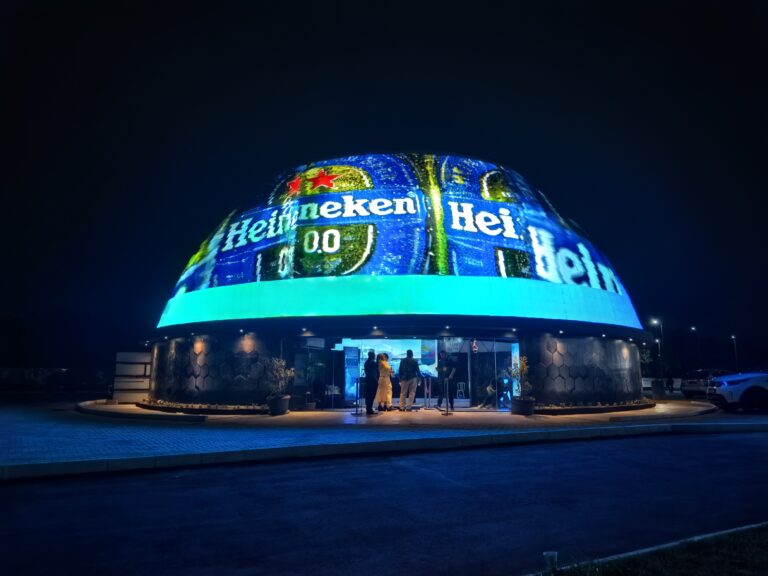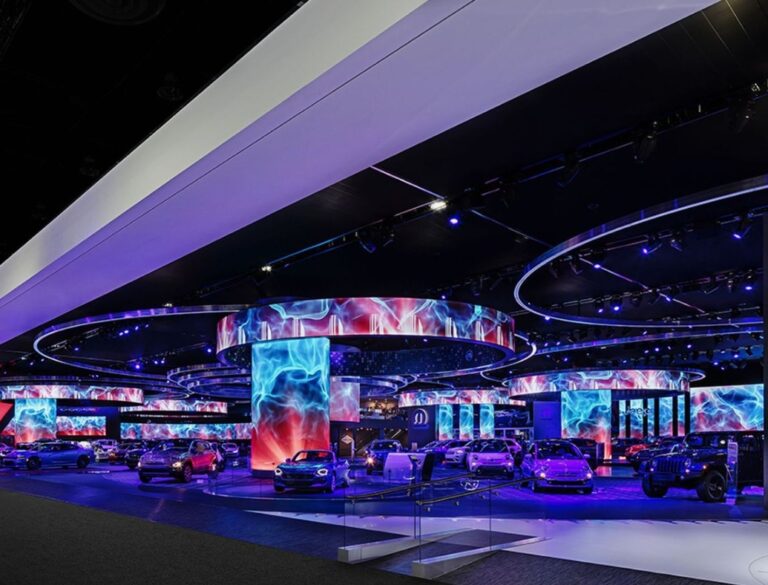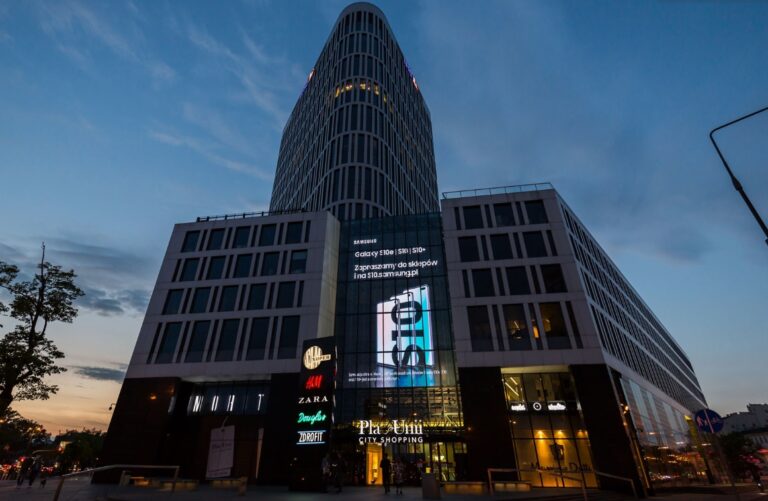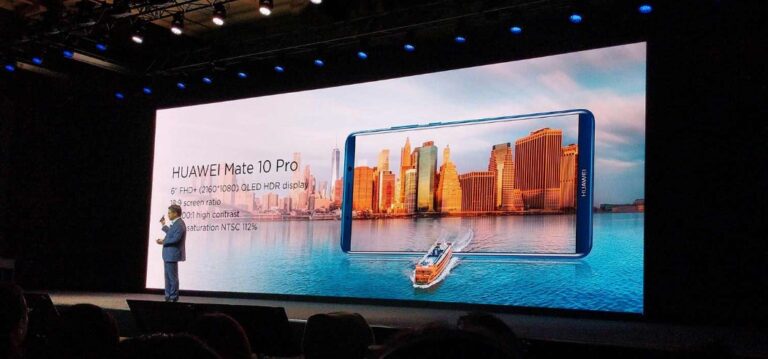Table of Contents
What is a Commercial LED Screen?
What is Commercial LED Display Technology?
Advantages of Commercial LED Displays
8 Considerations for Choosing Commercial LED Displays
What is a Commercial LED Screen?
A commercial LED screen is a high-definition display device that uses LED (Light Emitting Diode) as the light-emitting unit. It offers advantages such as high brightness, vibrant colors, high contrast, and wide viewing angles. Commercial LED screens are widely used in places like billboards, stage backgrounds, sports arenas, providing LED stage rental screen solutions.
What is Commercial LED Display Technology?
Commercial LED display technology utilizes Light Emitting Diodes (LEDs) as the light source. LEDs are semiconductor devices capable of emitting light. Commercial LED displays typically use LEDs of three primary colors (red, green, blue), and various colors can be produced by combining them. LED displays are categorized as monochrome, dual-color, and full-color types.
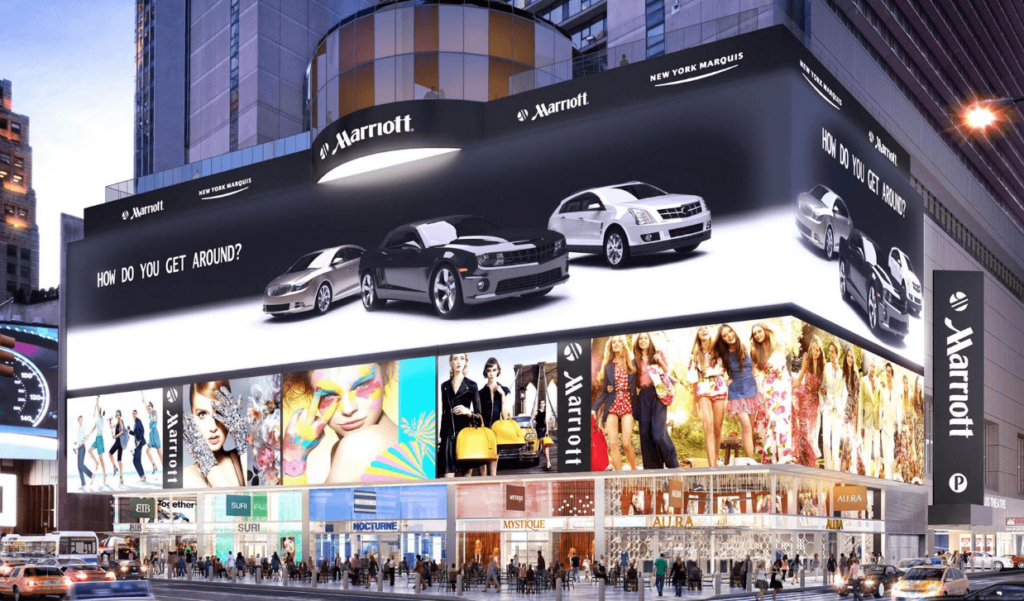
Advantages of Commercial LED Displays:
1. High Brightness: Commercial LED displays provide high brightness for clear visibility in both indoor and outdoor environments. This makes LEDs advantageous for applications like billboards, outdoor advertising, and large information displays.
2. High Energy Efficiency: LEDs are efficient light sources, consuming less energy compared to traditional lighting methods like fluorescent tubes. This helps reduce energy costs, making LED a sustainable choice.
3. Long Lifespan: LED displays have a longer lifespan, often exceeding tens of thousands of hours. This reduces maintenance costs, especially in challenging or expensive-to-access applications like large outdoor billboards.
4. Fast Response Time: LED displays have a rapid response time, enabling high refresh rates and avoiding issues like image blurring or trailing. This makes LED displays excel in presenting dynamic content.
5. Customizability: Commercial LED displays offer high customizability, allowing the creation of screens in different shapes and sizes based on specific requirements. This flexibility makes LED display technology suitable for various innovative designs.
6. Environmentally Friendly: LED displays do not contain harmful substances like mercury found in CRT monitors. Additionally, the high energy efficiency of LEDs contributes to reduced energy consumption, aligning with environmental standards.
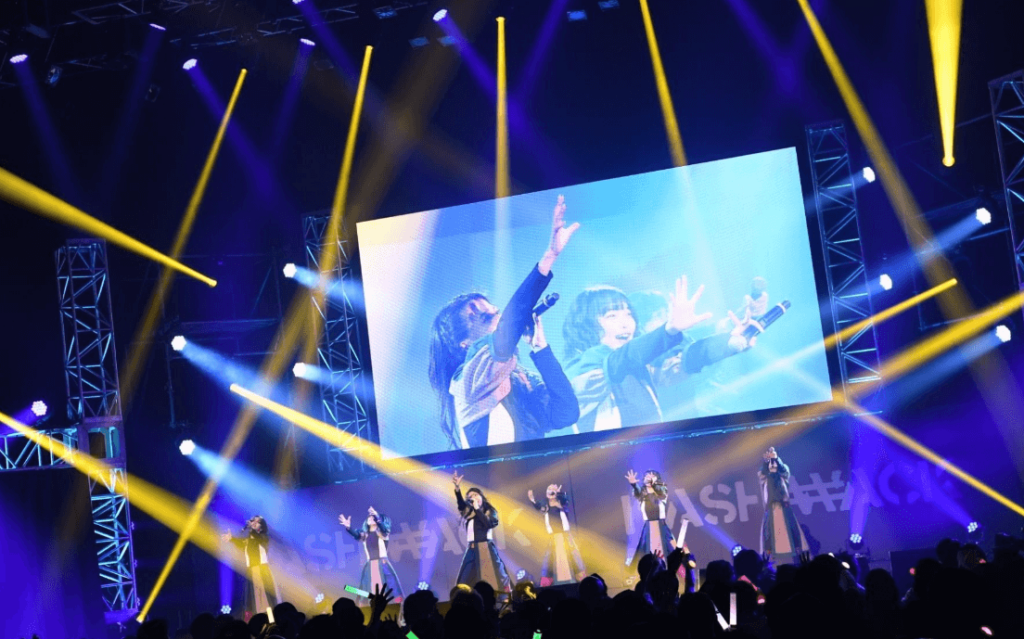
8 Considerations for Choosing Commercial LED Displays:
1. Application Scenario:
– Indoor or Outdoor: Distinguish between indoor and outdoor applications, as the required screen features and protection levels differ.
– Ambient Light Conditions: Observe the strength of ambient light to select a screen brightness suitable for the lighting conditions.
2. Display Requirements:
– Resolution: Choose an appropriate resolution based on audience distance and the detail requirements of the displayed content. Small-pitch LEDs are suitable for close viewing, while large-pitch LEDs are suitable for long distances.
– Brightness and Contrast: Ensure the LED display has sufficient brightness to cope with different lighting conditions. Improved contrast enhances image clarity.
– Refresh Rate: For scenarios requiring video or dynamic content, choose an LED screen with a high refresh rate to prevent image blurring.
3. Screen Size and Ratio:
– Screen Size: Select an appropriate screen size based on installation space and audience distance, ensuring it delivers sufficient visual impact.
– Screen Ratio: Choose a screen ratio that meets your requirements, commonly 16:9 and 4:3.
4. Durability and Protection Rating:
– Protection Rating: For outdoor LED displays, choose a screen with features such as water resistance, dust resistance, heat resistance, and UV resistance.
– Durability: Consider the material and structural design of the screen to ensure stability during prolonged use.
5. Viewing Angle and Color Performance:
– Viewing Angle: Choose an LED display with a large viewing angle to ensure consistent image quality at different angles.
– Color Performance: Consider the color reproduction performance of the LED display to ensure accurate image representation.
6. Energy Efficiency and Environmental Impact:
– Energy Efficiency: Select an LED display with high energy efficiency to reduce energy consumption and operational costs.
– Environmental Certification: Pay attention to whether the display has relevant environmental certifications to ensure manufacturing meets environmental standards.
7. Brand Reputation and After-Sales Service:
– Brand Reputation: Choose an LED display brand with a good reputation, considering industry reviews and customer feedback.
– After-Sales Service: Ensure the supplier provides comprehensive after-sales service, including maintenance, warranty, and technical support.
8. Cost and Budget:
– Overall Budget: Based on the project budget, balance performance and cost to choose a commercial LED display that best meets the requirements. How much do LED panels cost these days?
– Operating Costs: Consider the operating costs of the LED screen, including power consumption, maintenance, and updates.

